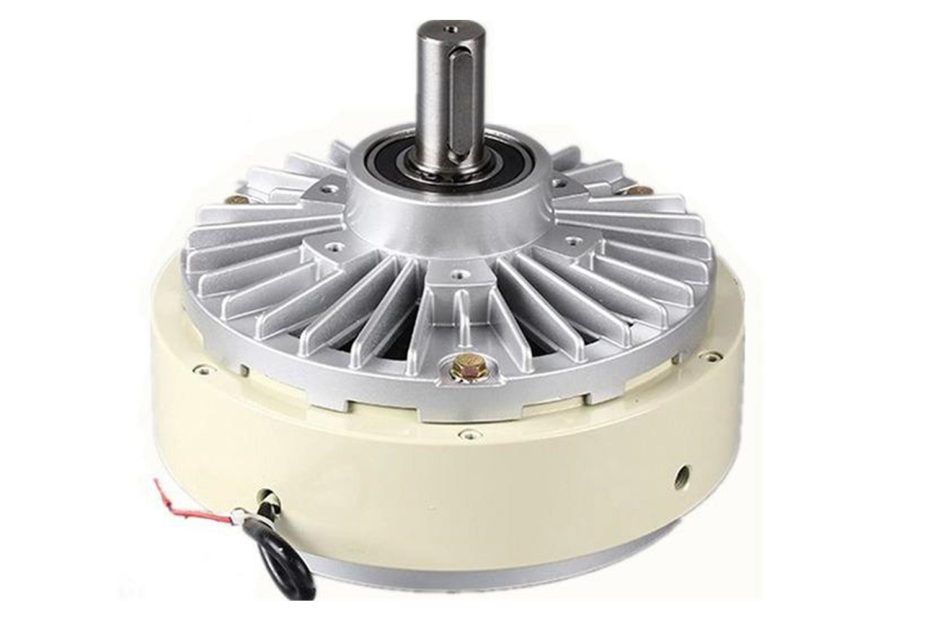Web tension control plays a crucial role in numerous industrial processes, especially in the realm of web handling and converting. The precise management of tension ensures the quality and consistency of the final product. In this context, magnetic particle brakes emerge as a sophisticated solution to optimize web tension control.
Magnetic particle brakes are based on electromagnetic principles and use magnetic powder to transmit torque. There is basically a linear relationship between the excitation current and the transmitted torque. Regardless of the slip, a certain amount of torque can be transmitted and the response speed is fast.
Magnetic particle brakes consists of two main components: the rotor and the stator. When a magnetic field is applied, the particles inside the brake engage, transmitting torque and allowing for controlled slippage. This inherent slip feature makes magnetic particle brakes an ideal choice for applications requiring precise tension control.
Magnetic particle brakes is an automatic control component with superior performance. It is widely used in various machinery for braking, loading and unwinding tension control in winding systems for different purposes.
Top 3 Advantages of Magnetic Particle Brakes
- Torque Control : Magnetic particle brakes offer unparalleled torque control capabilities. The level of torque applied can be precisely adjusted, providing a high degree of control over the tension in the web.
- Speed Regulation :These brakes excel in maintaining consistent speed across varying loads. The ability to regulate speed dynamically makes them suitable for applications where uniform web tension is critical.
- Compact Design :With a compact and lightweight design, magnetic particle brakes are easy to integrate into existing systems. Their space-efficient nature allows for flexibility in installation, especially in constrained industrial environments.
Top 3 Applications in Web Tension Control
- Printing and Packaging : In the printing and packaging industry, web tension control is pivotal for ensuring precise registration and preventing defects in the final product. Magnetic particle brakes contribute to achieving the required tension levels, leading to improved print quality and reduced waste.
- Textile Manufacturing : In textile manufacturing, maintaining consistent tension during processes such as weaving and winding is essential. Magnetic particle brakes offer the necessary control to prevent issues like stretching or wrinkling in the fabric.
- Coating and Laminating : Web tension control is critical in coating and laminating applications to ensure uniform thickness and adhesion. Magnetic particle brakes facilitate accurate tension adjustments, enhancing the overall quality of coated and laminated materials.

Magnetic Particle Brake Specifications and Performance:Implementation in a Flexible Packaging Line
To illustrate the practical application of magnetic particle brakes, let’s consider a case study involving a flexible packaging line.
| Brake Model | Maximum Torque (Nm) | Speed Range (rpm) | Compactness |
|---|---|---|---|
| MPB-500 | 500 | 0-1500 | High |
In this case, the MPB-500 magnetic particle brake was integrated into the unwinding system of the packaging line. The table highlights its maximum torque, speed range, and compact design, showcasing the brake’s suitability for the application.
Conclusion
Magnetic particle brakes represent a significant advancement in web tension control technology. Their precise torque control, compact design, and diverse applications make them invaluable in various industries. As technology progresses, we can expect further refinements and innovations in magnetic particle brake systems, continuing to enhance the efficiency and reliability of web tension control in industrial processes.
